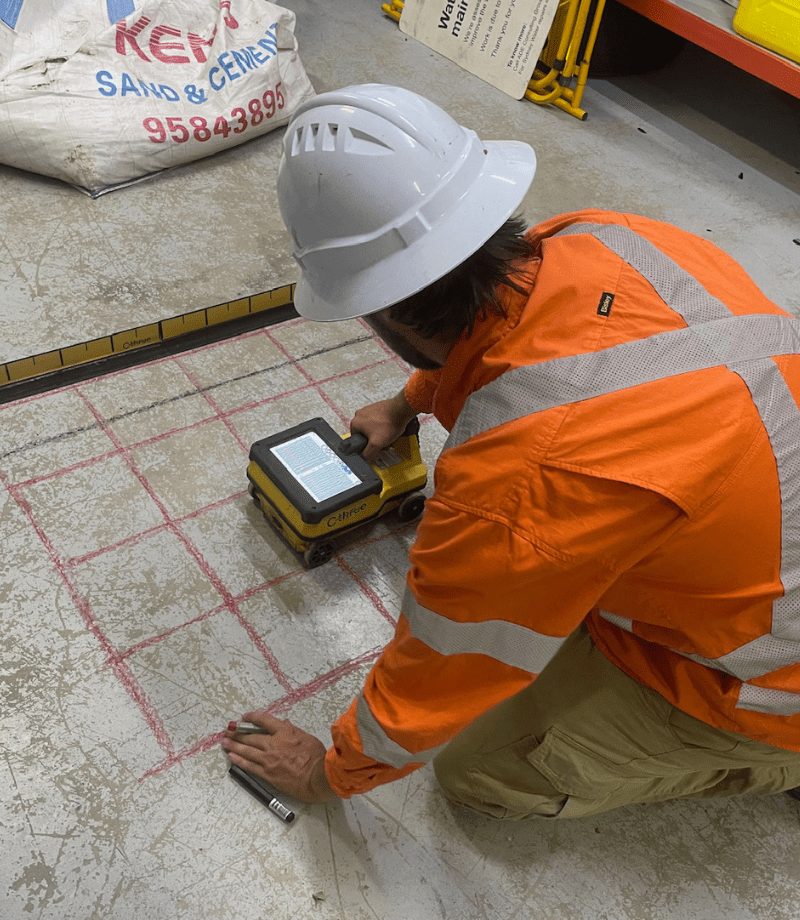Effective Concrete Scanning Approaches for Construction Tasks
Effective Concrete Scanning Approaches for Construction Tasks
Blog Article
Unveil the Transformative Power of Concrete Scanning in Making Best Use Of Efficiency and Security
Concrete scanning has actually become an essential tool in the building and construction market, offering unequaled advantages in enhancing task efficiency and making sure safety criteria. By utilizing advanced technology, concrete scanning enables experts to see beyond the surface area, revealing hidden complexities that might impact the structural honesty of a building. The transformative power of concrete scanning hinges on its capability to supply thorough understandings and real-time information, changing how jobs are intended and executed. As we delve into the complexities of this ingenious technique, a globe of opportunities opens, showcasing a new age of building practices that prioritize precision and protection.
Relevance of Concrete Scanning
Making sure the structural integrity and security of building projects starts with the crucial step of carrying out complete concrete scanning. Concrete scanning is a non-destructive technique utilized to discover and map subsurface elements within concrete frameworks. This process is essential in identifying possible risks, such as rebar, post-tension wires, and channels, that might be hidden within the concrete. By utilizing advanced modern technologies like ground-penetrating radar (GPR) and electro-magnetic induction, building and construction groups can accurately situate these elements without triggering any kind of damage to the structure.
In addition, concrete scanning assists in optimizing project timelines and budget by staying clear of unforeseen prices and delays that may emerge due to unpredicted blockages within the concrete. Inevitably, spending in extensive concrete scanning is a proactive method that enhances both performance and security in building projects.
How Concrete Scanning Works
Concrete scanning operates as a critical device in construction tasks by utilizing advanced modern technologies to find and map subsurface elements without creating structural damages. Ground Permeating Radar (GPR) and Electromagnetic Induction (EMI) are two primary techniques made use of in concrete scanning.
During the scanning process, the information accumulated is evaluated in real-time, permitting prompt identification of potential risks or obstacles beneath the surface. This info help in decision-making, making sure that construction activities continue safely and successfully. In addition, 3D imaging software application can be made use of to produce topographic maps of the subsurface aspects, additionally boosting job planning and execution. By using these innovative modern technologies, concrete scanning considerably lowers the risk of expensive problems and injuries on construction websites.
Advantages of Concrete Scanning
Making use of advanced scanning technologies in building jobs uses a plethora of benefits, boosting both efficiency and safety on-site. One of the main benefits of concrete scanning is the capability to find and find embedded things such as rebar, post-tension cable televisions, and channels precisely. By determining these aspects before boring or cutting into concrete structures, the risk of you could look here accidental strikes is significantly decreased, avoiding potential injuries to employees and damage to the structure itself. Concrete scanning helps in preparation and making a lot more successfully, as it gives precise details regarding the place and depth of architectural components.

Case Research Studies: Concrete Scanning Success

In an additional situation, a construction company utilized 3D concrete scanning to examine the problem old concrete structures in a historic building. The thorough scans supplied valuable understandings into the extent of degeneration and aided focus on upkeep initiatives properly. By proactively addressing areas of concern identified with scanning, the business was able to prolong the life expectancy of the structure and make certain resident discover this security.
These situation research studies highlight the transformative power of concrete scanning in improving effectiveness, accuracy, and safety in construction projects.
Executing Concrete Scanning in Projects
Applying sophisticated scanning modern technologies throughout building and construction tasks has ended up being progressively vital for improving precision and safety. By incorporating concrete scanning right into job planning and implementation, building and construction groups can determine possible risks, such as rebar or post-tension cable televisions, hidden within concrete structures. This aggressive strategy lessens the threat of mishaps, delays, and pricey rework, inevitably causing much more efficient task timelines and budget plans.
To execute concrete scanning effectively, task supervisors ought to team up carefully with skilled scanning professionals to establish the most suitable scanning strategies for the particular project demands. Engaging scanning specialists from the onset of a job enables the group to create thorough scanning plans that address vital areas of problem and guarantee comprehensive information collection.
Furthermore, including concrete scanning into normal project operations can improve decision-making procedures, as real-time scan information provides prompt understandings into the condition of concrete structures - Concrete Scanning. This data-driven technique facilitates notified analytic and enables groups to make adjustments immediately, cultivating a culture of performance and safety throughout the task lifecycle

Verdict
In final thought, concrete scanning plays an important duty in improving efficiency and security in construction jobs. By utilizing sophisticated technology to map and spot out underlying structures within concrete, this process assists to stop expensive mistakes, make sure structural honesty, and lessen threats on site. With the capability to reveal covert components and offer accurate data, concrete scanning proves to be a useful device for optimizing job end results and making best use of general success.
Concrete scanning is a non-destructive method made use of to detect and map subsurface elements within concrete structures. Additionally, concrete scanning click here now assists in optimizing task timelines and budget by preventing unexpected expenses and hold-ups that may occur due to unpredicted blockages within the concrete. One notable situation research study entails a large renovation project where concrete scanning played an important function in making certain task success.In another case, a construction company used 3D concrete scanning to examine the problem of maturing concrete frameworks in a historical structure. By incorporating concrete scanning right into job preparation and implementation, building teams can determine prospective dangers, such as rebar or post-tension cords, concealed within concrete structures.
Report this page